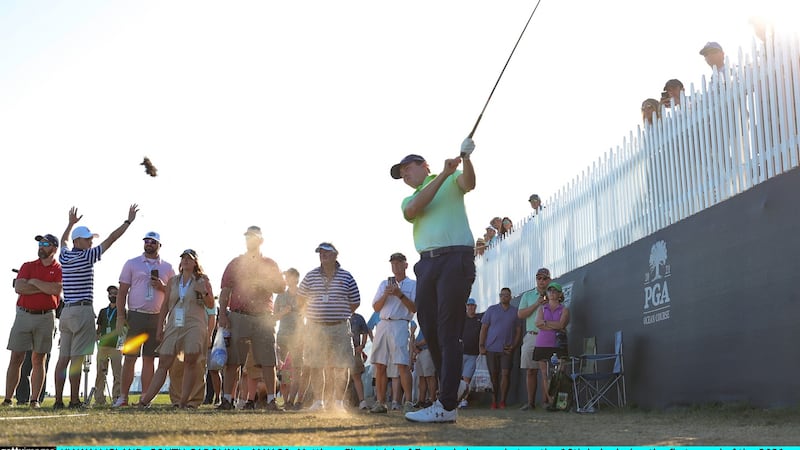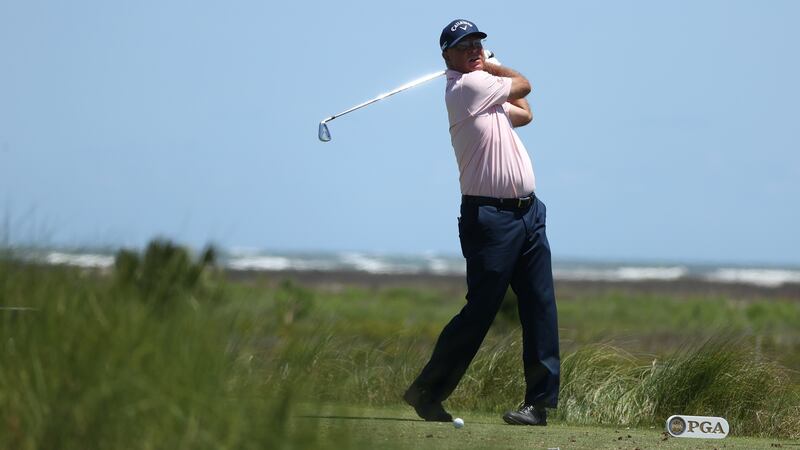The pace of play over the first few days at Kiawah Island has been, to say the least, glacial. Quick rounds can never be expected at a Major championship and particularly not at such a tough course with so many variables in play but it was interesting to see on Thursday that John Catlin was handed a one-shot penalty for two infringements when he took 74 seconds over his second shot at the 16th and then took 63 seconds over his approach to the third.
Now, slow play penalties are all well and good and we should definitely see more of them to speed things up but the fact is that Catlin is the first player to receive one since 14-year-old amateur Guan Tianlang was pinged at the Masters in 2014.
Given that neither of those players are exactly the biggest names in golf it’s certainly no stretch to question whether some easy targets are being used as scapegoats. Or maybe all of the top players just play really quickly…
Hard hats needed at the 18th
It’s a pity to see much of the challenge of the 18th hole at the Ocean Course neutralised by the huge grandstand left of the fairway.
With danger all down the right and the ideal angle to the green coming from the left, it’s become the norm over the first few days to see players tee it up and take the water out of play by simply blasting it at the grandstand down the left.

Yes, you read that right, numerous players have deliberately hit it directly at the fans down the left of the hole. The reason they’re doing so isn’t in response to someone shouting “babba-booey” or “mashed potato” or something else but, instead, because by hitting the grandstand they can then take relief under the temporary immovable obstruction rule, allowing the player to drop in the trampled down grass to the left of the fairway and play their second shot from a perfect angle. On Thursday Keegan Bradley even advised fans heading for the grandstand at the 18th to “have their hard hats on”.
Quote unquote
“Up there, beside the camera … yeah, just shut up.” - Pádraig Harrington’s caddie Ronan Flood wasn’t having much of a few loud fans while his player was putting on the 16th on Friday.
By the numbers
1: That's how many birdies were made on the Par 3 17th at the Ocean Course in the whole first round. Talor Gooch was the lone competitor to make a two on a hole which will likely play at least a little easier at the weekend when the wind switches.
Skinner just enjoying being out there
One of the unique parts of the US PGA Championship is that 20 PGA professionals qualify each year to play alongside the world’s best. This year, the oldest of those and the oldest player in the field is 60-year-old Sonny Skinner who coaches at River Pointe Golf Club in Georgia.

With average driving distance of around 255 yards, the longest course in Major history was going to be quite the test for Sonny but he was making sure he enjoyed every minute. On Thursday he opened with a round of 85 (13 over par) and said afterwards that “85 was the best I could do. I tried on every one of them.
“A few of my good shots received quite an applause from the gallery, which I was amazed by. I think being a club pro and being my age and making it into the field had some people pulling for the underdog, and I appreciate that acknowledgment.”
Portmarnock the inspiration
While the Ocean Course at Kiawah Island may not be a links layout as we know over here, the Pete Dye-designed masterpiece does have some similarities aside from the obvious in that it’s beside the sea.
With marshes and wetlands surrounding many of the fairways at the South Carolina course, Paul McGinley told a story during Sky Sports commentary that, during a dinner with Dye in 1997, the late course architect told him that much of the inspiration for the Ocean Course came from Portmarnock Golf Club and the marshes that come into play around it.
The Dublin club has been missed from the professional golf circuit for many a year now so let’s hope the club’s moves towards an all-inclusive membership become a reality soon and we can see it in all its glory once again.












